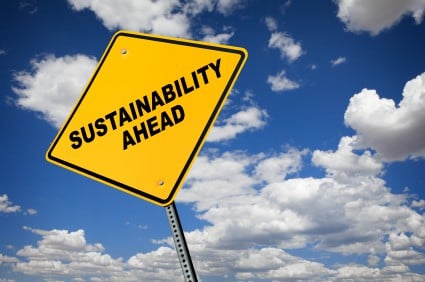
Sustainability can have different meanings to different people in the context of corporate social responsibility. One of the best definitions of business sustainability we’ve seen was outlined at the 2022 World Sustainable Development Summit which presented sustainability as an integration of social, economic, and environmental factors.
The Environmental Protection Agency has echoed a similar sentiment about business sustainability, pointing out that:
“Sustainability is based on a simple principle: Everything that we need for our survival and well-being depends, either directly or indirectly, on our natural environment. To pursue sustainability is to create and maintain the conditions under which humans and nature can exist in productive harmony to support present and future generations.” H2: Our Sustainable Mission
At FrontStream, our focus on business sustainability means working closely with companies to help them develop plans that combine long-term profitability with maximum social responsibility and environmental care. Following the 3 Pillars of Business Sustainability, as described below, can help your business forge a path toward larger corporate social responsibility goals.
The 3 Pillars of Sustainability
One way to look at sustainability is by considering the 3 Pillars of Sustainability. Under this approach, companies target a balanced approach to long-term social, environmental, and economic objectives.
Another way to look at this is through the concept of the Triple Bottom Line — People, Planet, and Profit.
PEOPLE: The Social Pillar of Sustainability
The social aspect of business sustainability focuses on balancing the needs of the individual with the needs of the group. Different companies do this in different ways, with some of the most successful corporate sustainability programs taking an approach that ties in well with their corporate missions:
At Walmart, social initiatives include market-specific skills training programs, sustainable agriculture and food donations, worker safety initiatives, and women’s empowerment programs.
Nestle has committed to addressing the community impacts arising as a result of their operations with a variety of sustainable business initiatives. These include programs focusing on water scarcity, health and wellness of communities around their factories, and land management that honors the usage rights of local people.
Verizon supports its social and community efforts through volunteer grants, matching gifts, disaster relief, and recovery programs, and cause collection efforts where employees donate time, money, and material goods. The company is also spearheading the introduction of energy-saving technologies to schools, medical clinics, and senior living facilities.
PLANET: The Environmental Pillar of Sustainability
Environmental sustainability occurs when processes, systems, and activities reduce the environmental impact of an organization’s facilities, products, and operations.
Herman Daly, a pioneer in environmental sustainability, proposed that:
- For renewable resources, the rate of harvest should not exceed the rate of regeneration
- For pollution, the rates of waste generation from projects should not exceed the assimilative capacity of the environment
- For nonrenewable resources, the depletion of the nonrenewable resources should require comparable development of renewable substitutes for that resource
At Walmart environmental initiatives include increasing imports from “green” and “yellow” factories, a goal of zero waste, plastic bag reduction, and initiatives to reduce carbon footprint by managing energy consumption.
Nestle identified four priority areas to manage their environmental sustainability: water, agricultural raw materials, manufacturing and distribution, and packaging specific to their food and beverage business.
Verizon’s initiatives towards environmental sustainability include a record-breaking year in electronic gear and telecom equipment recycling, reducing energy use by providing employees with flexibility in where they work, reductions in carbon intensity, finding more efficient and eco-friendly solutions for its fleet, greener packaging, using alternative sources of energy for its cell towers, and many other initiatives to reduce the impact on the environment.
PROFIT: The Economic Pillar of Sustainability
Economic sustainability is used to define strategies that promote the utilization of socio-economic resources to their best advantage. A sustainable business model proposes an equitable distribution and efficient allocation of resources. The idea is to promote the use of those resources in an efficient and responsible way that provides long-term benefits and establishes profitability. A profitable business is more likely to remain stable and continue to operate from one year to the next, which creates longevity for both the business and its employees
The Compounding Power of the 3 Pillars of Sustainability
The most powerful thing for modern businesses taking a comprehensive approach to sustainability is that a focus on social and environmental issues is likely to create profitability in its wake. Social initiatives have a positive impact on consumer behavior and employee performance, while environmental initiatives such as energy efficiency and pollution mitigation can have a direct impact on reducing waste, which also improves a business’ financial health.
Economic sustainability involves making sure the business makes a profit but also ensures that business operations don’t create social or environmental issues that would harm the long-term success of the company.
Defining business sustainability and corporate social responsibility by using the 3 Pillars of Sustainability can help a company determine its own sustainable and successful path forward. Following these general guidelines and learning from the examples of other companies will let you determine the best path to take for your own company.
Learn More about FrontStream's Workplace Philanthropy Platform
Get the latest trends and topics delivered to your inbox!
Subscribe to FrontStream's Blog